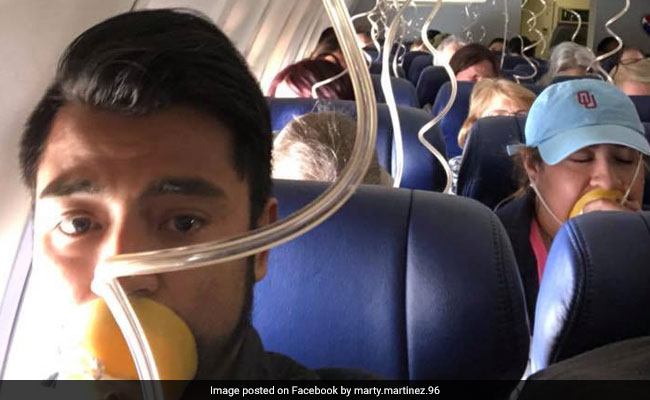
Marty Martinez explained why he opened his laptop and fumbled for his credit card to pay $8 for Wi-Fi.
The first reaction of Southwest AirlinespassengerMarty Martinez when an engine exploded on the plane on Tuesday was to live stream what he feared might be his last minutes of life.It was possibly the first time someone who thought he was going to die in a plane crash live-streamed the experience.Martinez lived.
One passenger, bank executive Jennifer Riordan, was killed when she was partially pulled through a shattered plane window.But while Martinez, who runs a Dallas marketing agency, said on Wednesday he wanted to communicate with loved ones, many social media users attacked him in expletive-laced postings, with one saying Martinez himself should have been the one who died."Trying to contact loved ones is one thing, but to morbidly video and take pictures to post publicly is completely disgusting.
Evidently the wrong person was taken from that flight," Dennis Miller said on Facebook in a posting that included colourful language to describe Martinez.Many social media users defended Martinez's use of Facebook Live, but some said he violated passengers' privacy and sought cheap fame.
Others said he was selfish to focus on messaging instead of on the critically injured passenger a few rows away."You represent the worst of social media," Tom Burke said on Facebook.The event illustrates thorny issues facing platforms such as Google's YouTube, Twitter's Periscope and Facebook, already under pressure over privacy and news curating, over hosting live-streaming material.Facebook did not respond to a request for comment on Martinez's posts.Earlier this month, Facebook vice president Fidji Simo talked about the power of live streaming."Live can be a powerful tool in connecting and supporting communities during moments of crisis," Simo said in a post.Since 2016, the average number of daily Facebook Live broadcasts has doubled year over year, with 3.5 billion live broadcasts since then."THIS IS NOT ONLINE TELEVISION"Martinez explained on Wednesday why he opened his laptop and fumbled for his credit card to pay $8 for Wi-Fi while other passengers were grabbing oxygen masks."All I could think of in that moment was, I need to communicate with my loved ones," he said on ABC television.
"I thought, 'These are my last few moments on Earth and I want people to know what happened.'"Some social media users questioned his motives."I didn't see you say anything to the people you love," said Lakeya Collins on Facebook.
"This social media world today is sickening Everyone wants to go viral ugggh."Other users said he provided important images."God forbid the outcome had been different, surely friends and family of those you captured would have at least had closure knowing the exact truth," said Klaudia Olszowka.Social media watchers said Martinez's actions might be morally offensive to some but did not appear to violate Facebook's "community standards," which include bans on certain graphic or violent content, or that which is deemed disrespectful.Heidi Julien, a professor of information studies at University at Buffalo, New York, said it was inevitable people would use technology to show such events.
Some of the negative responses to Martinez's videos - with dozens of users picking fault with how he wore his oxygen mask - showed a desensitization to what people saw live."This is not online television, this is people's real lives," Julien said.
Thomson Reuters 2018(Except for the headline, this story has not been edited by staff and is published from a syndicated feed.)

 14
14






